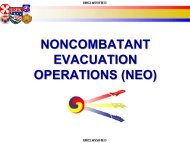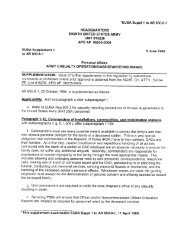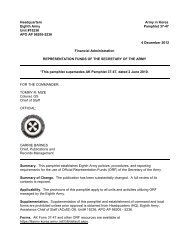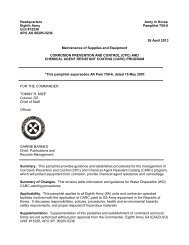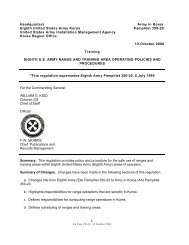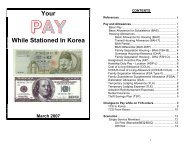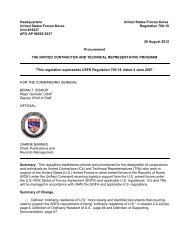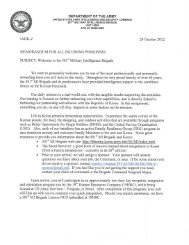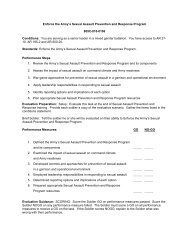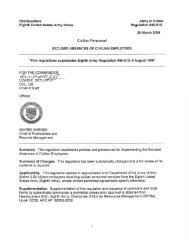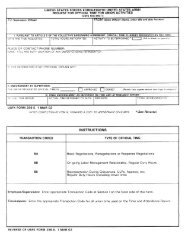CAS3 Staff Officer Guide - U.S. Army
CAS3 Staff Officer Guide - U.S. Army
CAS3 Staff Officer Guide - U.S. Army
You also want an ePaper? Increase the reach of your titles
YUMPU automatically turns print PDFs into web optimized ePapers that Google loves.
8 Meetings<br />
© 2005 <strong>CAS3</strong> For Instructional Purposes Only<br />
Compiled by www.<strong>Army</strong>Toolbag.com<br />
Meetings 68<br />
General<br />
Because meetings are often managed incorrectly, meetings can easily become the number one time<br />
waster of a command and its staff. <strong>Staff</strong> officers will follow the guidelines of this chapter to help<br />
them use time more efficiently.<br />
Types of Meetings<br />
a. The informational (or instructional) meeting is used to provide information. The group does<br />
not seek a decision. The meeting may take a formal nature, as in a briefing, or an informal nature,<br />
where the group discusses a series of topics. Most staff meetings are informational meetings.<br />
b. Problem-solving and decision-making meetings provide the forum to bridge the gap between<br />
what is happening and what the group wants to happen in the future. The leader decides whether the<br />
meeting is a decision-making meeting prior to scheduling the meeting. The problem-solving meeting<br />
does not end in a decision, but is a meeting that the group conducts prior to the decision-making<br />
meeting.<br />
Scheduling a Meeting<br />
<strong>Staff</strong> officers should carefully decide whether to have a meeting and who should attend.<br />
a. Have a meeting when:<br />
(1) The group needs to receive information or provide advice.<br />
(2) The group needs to be involved in the problem-solving process.<br />
(3) Members of the group have information to share.<br />
(4) The group desires to discuss an issue with the leader.<br />
(5) Regulations or policies require a periodic meeting.<br />
b. Do not have a meeting when:<br />
(1) More efficient ways to communicate exist (e.g., telephone, memorandum, or e-mail).<br />
(2) Poor or inadequate data or preparation exists.<br />
(3) The leader has already made up his mind. A meeting to share the boss’ thoughts is<br />
acceptable; however, do not have a meeting with the idea of making a decision when the boss has<br />
already decided.<br />
(4) The subject is highly classified or involves sensitive or personal information.<br />
Planning a Meeting<br />
Plan the meeting prior to its assembly using the “N.E.A.T.E.R.” model as a tool to increase the<br />
meeting’s efficient use of time.



